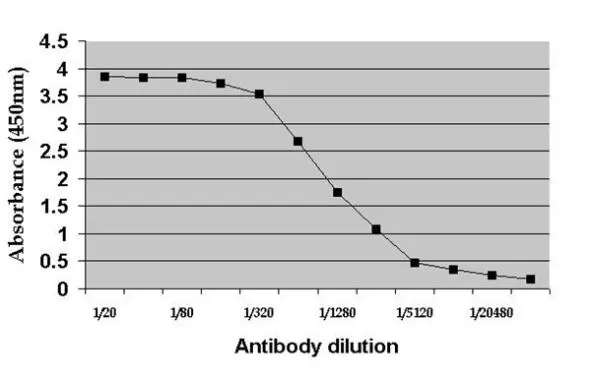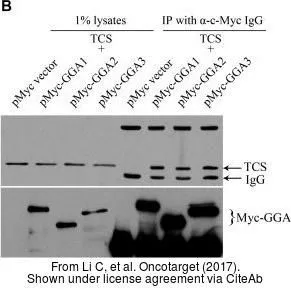
The data was published in the journal Oncotarget in 2017.PMID: 28460437
c-Myc antibody [9E10]
GTX20032
ApplicationsFlow Cytometry, ImmunoFluorescence, ImmunoPrecipitation, Western Blot, ELISA, ImmunoCytoChemistry
Product group Antibodies
TargetMYC
Overview
- SupplierGeneTex
- Product Namec-Myc antibody [9E10]
- Delivery Days Customer9
- ApplicationsFlow Cytometry, ImmunoFluorescence, ImmunoPrecipitation, Western Blot, ELISA, ImmunoCytoChemistry
- CertificationResearch Use Only
- ClonalityMonoclonal
- ConjugateUnconjugated
- Gene ID4609
- Target nameMYC
- Target descriptionMYC proto-oncogene, bHLH transcription factor
- Target synonymsMRTL, MYCC, bHLHe39, c-Myc, myc proto-oncogene protein, avian myelocytomatosis viral oncogene homolog, class E basic helix-loop-helix protein 39, myc-related translation/localization regulatory factor, proto-oncogene c-Myc, transcription factor p64, v-myc avian myelocytomatosis viral oncogene homolog, v-myc myelocytomatosis viral oncogene homolog
- HostMouse
- IsotypeIgG1
- Protein IDP01106
- Protein NameMyc proto-oncogene protein
- Scientific DescriptionThis gene is a proto-oncogene and encodes a nuclear phosphoprotein that plays a role in cell cycle progression, apoptosis and cellular transformation. The encoded protein forms a heterodimer with the related transcription factor MAX. This complex binds to the E box DNA consensus sequence and regulates the transcription of specific target genes. Amplification of this gene is frequently observed in numerous human cancers. Translocations involving this gene are associated with Burkitt lymphoma and multiple myeloma in human patients. There is evidence to show that translation initiates both from an upstream, in-frame non-AUG (CUG) and a downstream AUG start site, resulting in the production of two isoforms with distinct N-termini. [provided by RefSeq, Aug 2017]
- Storage Instruction2°C to 8°C
- UNSPSC12352203
References
- Large-scale phenogenomic analysis of human cancers uncovers frequent alterations affecting SMC5/6 complex components in breast cancer.Read more
- Cauliflower mosaic virus P6 Dysfunctions Histone Deacetylase HD2C to Promote Virus Infection. Li S et al., 2021 Sep 1, CellsRead more
- VCP maintains nuclear size by regulating the DNA damage-associated MDC1-p53-autophagy axis in Drosophila. Chang YC et al., 2021 Jul 12, Nat CommunRead more
- CUL4-DDB1-CRBN E3 Ubiquitin Ligase Regulates Proteostasis of ClC-2 Chloride Channels: Implication for Aldosteronism and Leukodystrophy. Fu SJ et al., 2020 May 26, CellsRead more
- A nonsense mutant of the hepatitis B virus large S protein antagonizes multiple tumor suppressor pathways through c-Jun activation domain-binding protein1. Chiu SY et al., 2019, PLoS OneRead more
- NBS1 promotes the endonuclease activity of the MRE11-RAD50 complex by sensing CtIP phosphorylation. Anand R et al., 2019 Apr 1, EMBO JRead more
- Vti1a/b regulate synaptic vesicle and dense core vesicle secretion via protein sorting at the Golgi. Emperador-Melero J et al., 2018 Aug 24, Nat CommunRead more
- Cdc48/VCP Promotes Chromosome Morphogenesis by Releasing Condensin from Self-Entrapment in Chromatin. Thattikota Y et al., 2018 Feb 15, Mol CellRead more
- Trichosanthin increases Granzyme B penetration into tumor cells by upregulation of CI-MPR on the cell surface. Li C et al., 2017 Apr 18, OncotargetRead more
- SEPT12 phosphorylation results in loss of the septin ring/sperm annulus, defective sperm motility and poor male fertility. Shen YR et al., 2017 Mar, PLoS GenetRead more

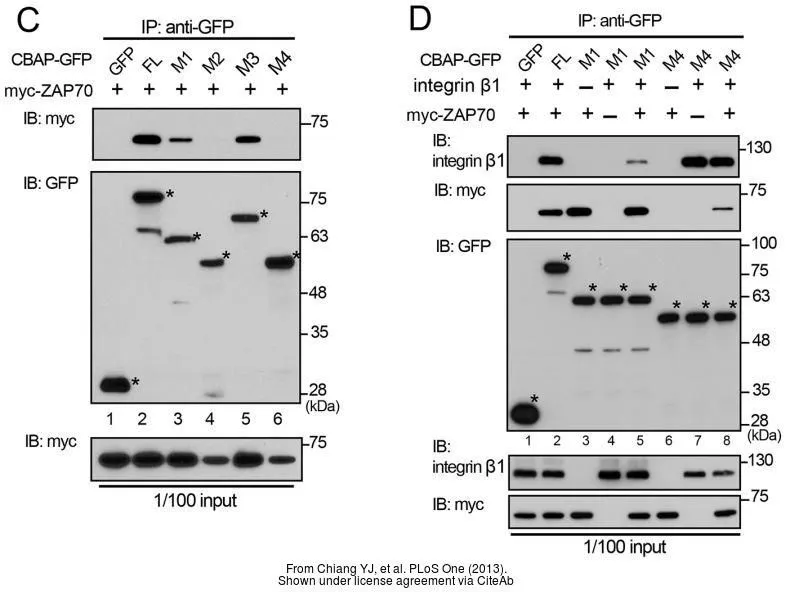
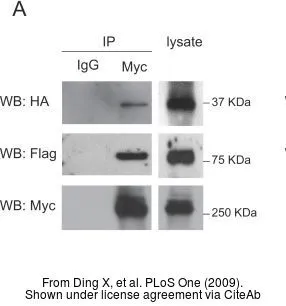
![Indirect ELISA analysis was performed by coating the plate with recombinant Multiple Tags Positive Control ( 6xHis-MBP-DDDDK-V5-HSV-HA-T7-Myc-S) (GTX130342-pro) (57.14-0.89 nM). Coated protein was probed with c-Myc antibody [9E10] (GTX20032) (1 microg/mL). Goat antibody Mouse IgG antibody (HRP) (1:10000) was used to detect the bound primary antibody. Indirect ELISA analysis was performed by coating the plate with recombinant Multiple Tags Positive Control ( 6xHis-MBP-DDDDK-V5-HSV-HA-T7-Myc-S) (GTX130342-pro) (57.14-0.89 nM). Coated protein was probed with c-Myc antibody [9E10] (GTX20032) (1 microg/mL). Goat antibody Mouse IgG antibody (HRP) (1:10000) was used to detect the bound primary antibody.](https://www.genetex.com/upload/website/prouct_img/normal/GTX20032/GTX20032_82200350_20240621_ELISA_Indirect_24062501_888.webp)



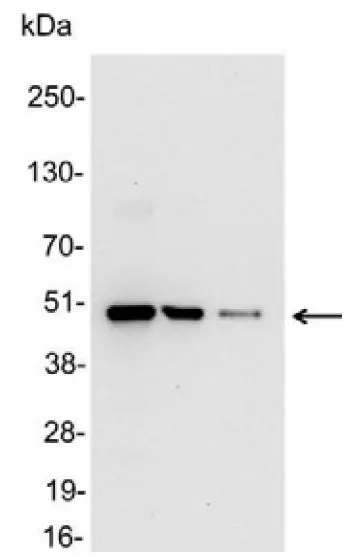
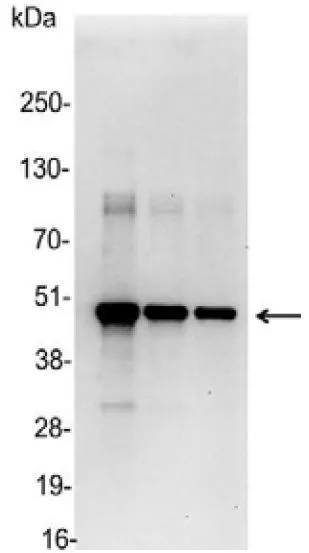
![FACS analysis of transfected LST-1-c-Myc in HEK-293 cells (red) compared with non-transfected HEK-293 cells (blue) using GTX10826 c-Myc antibody [9E10] (FITC).](https://www.genetex.com/upload/website/prouct_img/normal/GTX10826/GTX10826_20191025_AP_006_112_w_23060120_166.webp)
